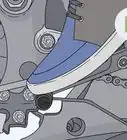This article was co-authored by wikiHow Staff. Our trained team of editors and researchers validate articles for accuracy and comprehensiveness. wikiHow's Content Management Team carefully monitors the work from our editorial staff to ensure that each article is backed by trusted research and meets our high quality standards.
This article has been viewed 95,125 times.
Learn more...
Motorcycle fairings are those plastic shells placed over the frame of the bike to reduce air drag. However, they’re also a great place to add some style and flair to your bike. One of the best ways to do this is to give your fairings an awesome paint job. Fortunately, even if you’ve never painted fairings before, the process is pretty easy! All you need is sandpaper, primer, and spray paint in order to clean, prep, and finally paint your motorcycle fairings.
Steps
Cleaning and Sanding the Fairings
-
1Remove the fairings from the motorcycle and set them in an open space. Unscrew all the bolts that are attaching the fairings to the motorcycle body in order to remove them. Place them in an open work space in order to prevent the fumes from the spray paint from being too concentrated when you actually paint the fairings.[1]
- After you remove the fairings, be sure to cover the rest of the motorcycle with a tarp in order to protect it from being exposed to the elements while you’re working.
- If you’re working with brand new fairings that haven’t been attached yet, feel free to skip this step.
-
2Clean the fairings with soapy water to remove any dirt from the surface. Mix ordinary dish soap and hot water in a bucket, then dip a sponge into the water and use it to clean the fairings. Use a circular scrubbing motion for best results. Once you’re done, be sure to rinse all the soapy water off before proceeding to the next step.[2]
- If your fairings have been used before, pay particular attention to those parts that have accumulated black engine gunk over time. These areas may require extra attention in order to be completely cleaned.
Tip: If there are any decals or stickers on your fairings, use a hairdryer to apply heat directly to them in order to loosen up the glue and make them easy to peel off!
Advertisement -
3Use 400-grit sandpaper to sand the surface of the fairings. Sand in a circular motion while applying moderate pressure to the surface. Making the surface of the fairings as smooth as possible will make it much easier for the primer and paint to actually adhere to the surface later on.[3]
- You can buy 400-grit sandpaper at any store that sells home improvement supplies.
-
4Rinse off the fairings to remove the dust and allow them to dry. Sanding the surface of the fairings will have caused a lot of dust to accumulate on the fairings, which needs to be removed before you can paint them. Wipe down the fairing with water and a microfiber cloth to make sure all of the dust is removed.[4]
- The fairings will probably require 1 hour in order to completely dry.
Priming and Painting the Fairings
-
1Apply a coat of primer to the fairings and allow it to dry. Spray the primer so that the surface is covered in a smooth, consistent layer. Spray it in even strokes without stopping in a particular spot in order to avoid leaving patches. Finally, give the primer about 3-6 hours to completely dry.[5]
- Be sure to use plastic primer for your fairings.
- You can buy aerosol primer at any paint supply store.
-
2Spray a thin layer of your base color onto the fairings and let it dry. Cover the entire surface of the fairings with this initial coat, making sure to not leave any spots where the primer is still visible. This thin coat should take about 6 hours to dry.[6]
- For maximum safety, wear a breathing mask and safety goggles when applying spray paint to the fairings.
Warning: Inhaling the fumes from spray paint can cause a number of unpleasant side effects, such as headache, nose and throat irritation, and nausea.
-
3Wet sand the fairings after the base color coat has dried. Squirt some water onto the surface of the fairings in order to make them wet, then use 1000-grit sandpaper to sand them smooth. Go over the fairings with a microfiber cloth once you’re done to remove any grit and to make sure they’re completely dry before adding more paint to them.[7]
-
4Apply another coat of the base color, then wait 3 hours for it to dry. Be sure to apply the spray paint in even strokes across the surface of the fairings. You can wait longer than 3 hours for the paint to dry if desired, but you need to give it at least 3 hours to ensure that it completely dries.[8]
-
5Repeat this process 3-4 times to put multiple coats on the fairings. This is a technique known as “grip coats,” in which each coat of paint “grips” the coat that has already been applied. This leads to a thicker, richer look to the paint that makes it look very professional. Be sure to wait at least 6 hours after you apply the final coat to allow the paint to dry.[9]
- You should ultimately apply 4-5 layers of paint to your fairings to get the best look.
-
6Apply 2 coats of lacquer to the fairings once the paint has dried. Spray the first coat of lacquer onto the fairings and use a microfiber cloth to spread it evenly across the surface. Let it dry for about 2 hours, then repeat this process to add a second layer.[10]
- Adding clear lacquer will help protect the paint from exposure to the elements.
- You can buy clear lacquer at any hardware store that sells painting supplies.
-
7Leave the fairings to dry for 24 hours, then reattach them to the bike. Use the same bolts that you removed from the fairings at the beginning of this process in order to reattach them to the motorcycle. Once this is done, the bike is ready to ride![11]
Community Q&A
-
QuestionCan I do the same procedure for the saddlebags?
 WynterCommunity AnswerIf your saddlebags are made of the same material as your fairing, then there should be no problem. Or you can always buy leather saddlebags if you don't want to paint the ones you have.
WynterCommunity AnswerIf your saddlebags are made of the same material as your fairing, then there should be no problem. Or you can always buy leather saddlebags if you don't want to paint the ones you have. -
Questionwhen you say base color do you mean the same paint as your final color or can it be another color?
 Community AnswerDepending on the type of paint and technique used. Often pearl or high gloss paints start with a base coat of different colors to enhance the final color. If your color is a primary color, then having a base coat of a matching color is fine. If starting with a fresh project on plastic parts, it can help to get a primer base coat that matches your final color but metals often require proper primer, lots of sanding, then the base coat, more sanding and blocking and eventually getting to the final color.
Community AnswerDepending on the type of paint and technique used. Often pearl or high gloss paints start with a base coat of different colors to enhance the final color. If your color is a primary color, then having a base coat of a matching color is fine. If starting with a fresh project on plastic parts, it can help to get a primer base coat that matches your final color but metals often require proper primer, lots of sanding, then the base coat, more sanding and blocking and eventually getting to the final color. -
QuestionCan I paint my fairings even on a cloudy day?
 Community AnswerAnything can be painted but you have to figure in several factors including humidity, exposure to the elements, and temperature. It's best to paint all those plastic parts on the same day if possible. The weather difference between two days can actually change how your paint dries and can affect the end color if painted at different times.
Community AnswerAnything can be painted but you have to figure in several factors including humidity, exposure to the elements, and temperature. It's best to paint all those plastic parts on the same day if possible. The weather difference between two days can actually change how your paint dries and can affect the end color if painted at different times.
Things You’ll Need
- Bucket
- Soapy water
- Sponge
- Sandpaper
- Microfiber cloths
- Plastic primer
- Spray paint
- Lacquer
References
- ↑ https://motormanner.com/how-to-paint-motorcycle-fairing/
- ↑ https://www.youtube.com/watch?v=t_87s1Rjat8#t=2m15s
- ↑ https://motormanner.com/how-to-paint-motorcycle-fairing/
- ↑ https://www.youtube.com/watch?v=HSIKU4ChFjE#t=30s
- ↑ https://www.youtube.com/watch?v=HSIKU4ChFjE#t=2m7s
- ↑ https://motormanner.com/how-to-paint-motorcycle-fairing/
- ↑ https://motormanner.com/how-to-paint-motorcycle-fairing/
- ↑ https://motormanner.com/how-to-paint-motorcycle-fairing/
- ↑ https://motormanner.com/how-to-paint-motorcycle-fairing/




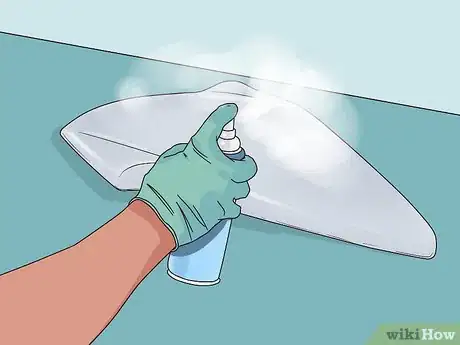
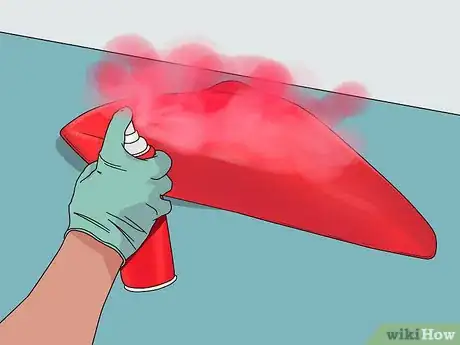



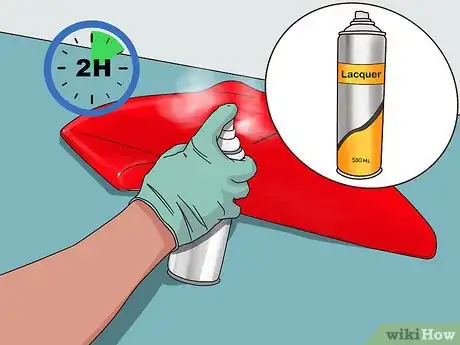


-Step-13.webp)
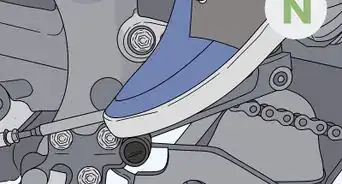


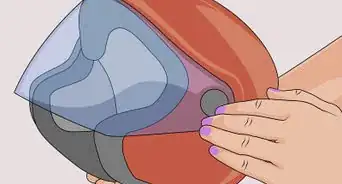
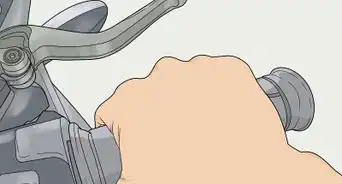
-Step-17.webp)
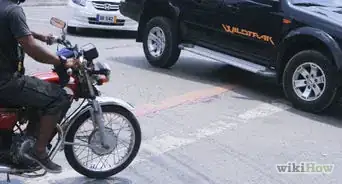
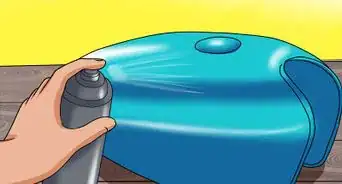









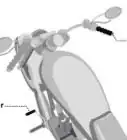
-Step-13.webp)
